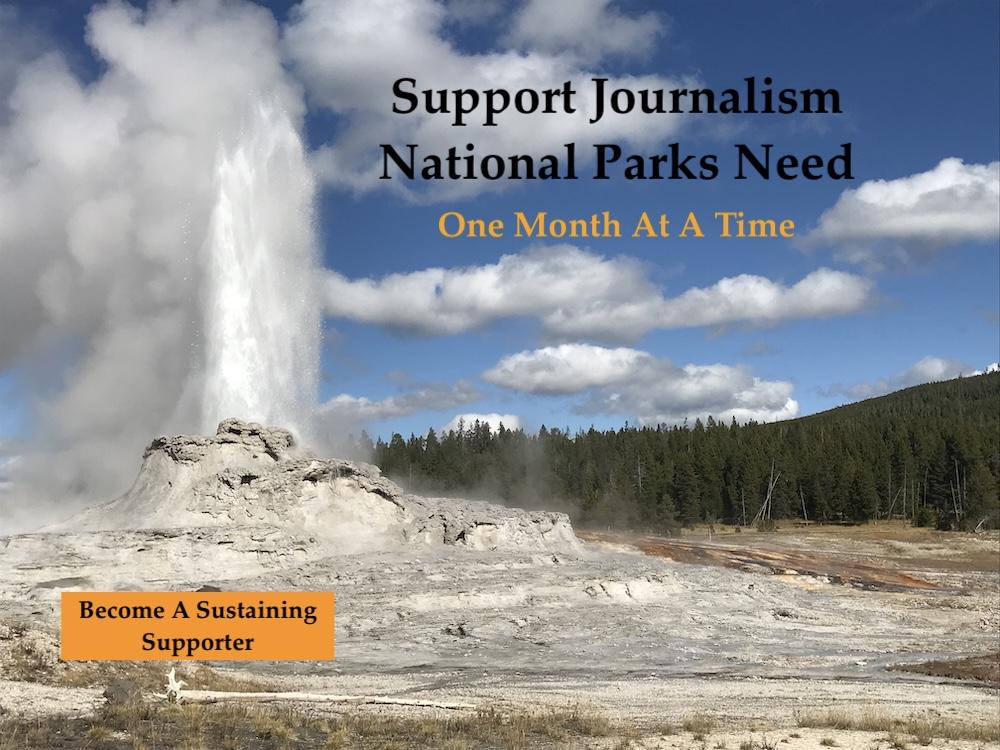He was born just a few months before the Civil War started, and he died just a few months before the Second World War ended. He was the first publicity director of the NPS, the first Executive Secretary of the National Parks Association, and a founding member of the Wilderness Society. He was Robert Sterling Yard -- just plain Bob to friends and acquaintances -- and he was one of the best advocates the National Park System ever had.
There’ll be a flurry of retrospective articles, speeches, and public pronouncements as the National Park Service’s 2016 centennial draws near. Journalists and national park spokesmen will direct much praise toward the giants on whose shoulders the NPS now stands, nudging Stephen T. Mather, Horace Albright, and other “founding fathers” closer to bureaucratic sainthood. But I wonder if the forgotten heroes of the agency’s past will be celebrated too. Will Bob Yard’s contributions, for example, get the respect they deserve?
Back in 1915, when the National Park Service did not yet exist, it did not take a genius to see that the national parks had an image problem. Most Americans knew that national parks and monuments existed, but could not say how many there were, where they were, and why they were established. Worse, the typical American was not emotionally invested in the national parks. They were widely seen as playgrounds for the affluent class, remote from the lives of ordinary citizens. Why should taxpayers be forced to pay for them?
Park super-booster Stephen Mather wanted to fundamentally change the way that Americans thought about the national parks. Being a very bright guy who understood the worth of publicity, he prevailed upon his friend Bob Yard to join him at the Interior Department in Washington and take charge of national parks publicity.
Princeton-educated Bob Yard was an inspired choice, not just because he was Mather’s loyal friend (and best man at his wedding), but mostly because he loved the parks and was a very skilled and well connected writer, editor, and publisher.
Yard arrived in Washington in early 1915, hit the ground running, and was soon generating park friendly publications at a blistering pace. Before the year was out he had not only published a goodly number of park-focused articles and pamphlets, but also assembled The National Parks Portfolio for distribution (beginning in 1916) to some 270,000 newspaper and magazine editors, elected officials, and other opinion makers throughout the United States. By 1931, six editions of this influential, well illustrated publication had been printed.
The efficacy of Yard’s efforts is revealed in the fact that over 1,000 articles focused on the national parks were published throughout the country between 1917 and 1919. It is no stretch of the truth to say that very few people before or since have helped to build the national park constituency at a more critical time or to greater good effect than Bob Yard. Importantly, publicity traced to Yard’s efforts helped to convince Congress that an independent agency should be created to administer the national parks. Small wonder that Mather counted Yard’s hiring as one of the best decisions he ever made.
After Mather was appointed first Director of the NPS, he put Yard in charge of the National Parks Educational Committee. This tiny NPS division was tasked to attract people to the national parks and enhance the educational value of park experiences through appropriate programs. Yard headed up the NPEC for several years, which brought him to the end of his Federal service.
Ironically, the ostensible reason for Yard’s departure from Federal government service was something that Stephen Mather did. The Interior Department budget did not provide an adequate salary for the national parks publicity chief, so Mather (who was a millionaire, thanks to a highly successful career as an industrialist) felt it necessary and proper to give Yard money out of his own pocket. Salary supplements were expressly forbidden by Federal law, and in 1919 that inconvenient fact caught up with Mather and Yard. After four highly productive years at Interior, Yard left the NPS and returned to private sector employment.
Mather did very well by Bob Yard, providing him with the monetary wherewithal to help create the National Parks Association, precursor to today’s National Parks Conservation Association. In 1919, the same year he left Interior, Yard became Executive Secretary of the NPA. In this capacity he worked to promote the national parks and educate Americans about their use. Yard fought for high standards in national park designation, especially esthetic appeals. His strong opposition to commercialism and industrialization, highly controversial issues during the 1920s and 1930s, often put him at odds with other park boosters.
In 1935,Yard co-founded the Wilderness Society. Elected as the organization’s president in 1937, he served in that capacity until his death on May 17, 1945. He is remembered as an important activist for the cause of wilderness preservation.
Postscript: There’s always more to a story than meets the eye. By the time he left the NPS in 1919, Bob Yard was a disgruntled employee. Stephen Mather, who suffered from severe bouts of depression, had suffered a mental breakdown in January 1917 and was not able to perform his duties until 1919. Yard believed he should have been appointed interim director of the NPS, but that position was filled instead by Horace Albright, the man that Mather had chosen to be his assistant director. Yard never got over his disappointment at being passed over in favor of the 27-year old Albright. He was looking elsewhere for a new job by 1919 and would have left the NPS even if no salary flap had ever arisen.
Traveler trivia, no extra charge: Bob Yard was a very urbane man. Though be loved the national parks and fought hard to preserve wilderness, he didn’t feel comfortable in the great out-of-doors and spent as little time there as practicable.


 Support Essential Coverage of Essential Places
Support Essential Coverage of Essential Places






